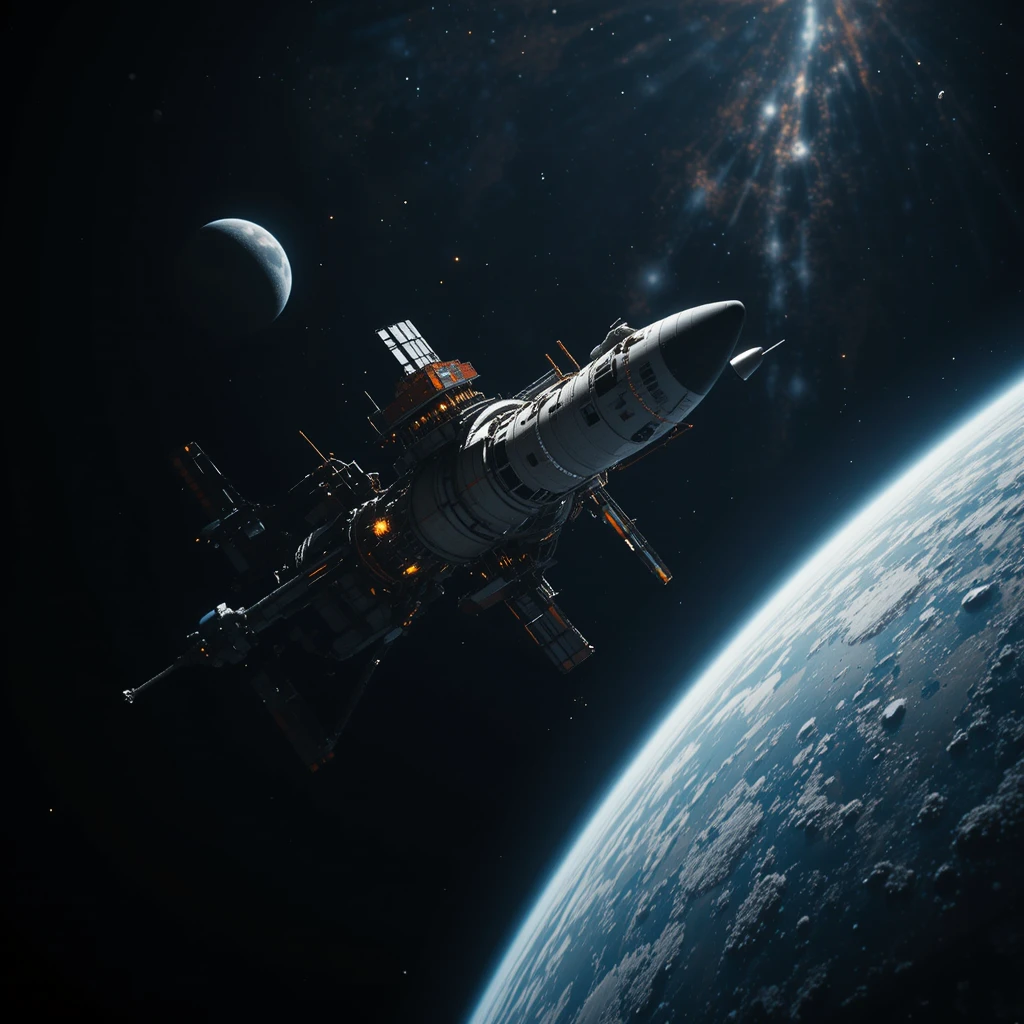As of July 2025, humanity has launched five spacecraft that have either entered interstellar space or are destined to do so: NASA’s Pioneer 10, Pioneer 11, Voyager 1, Voyager 2, and New Horizons. These missions, initially conceived to explore the outer planets, have transcended their original goals, becoming humanity’s first ambassadors to the vast interstellar medium beyond the Sun’s influence. This article provides an in-depth exploration of these probes, detailing their launch dates, missions, scientific achievements, current statuses, and their broader significance for science and human aspiration. It also examines proposed future interstellar missions and the challenges of exploring beyond our Solar System, all within a comprehensive yet concise framework.

Table of Contents
The Dawn of Interstellar Exploration
The pursuit of interstellar exploration emerged from the technological and scientific advancements of the 20th century’s Space Age. The 1960s saw humanity’s first ventures to the Moon and inner planets, but by the 1970s, NASA set its sights on the outer solar system—Jupiter, Saturn, Uranus, and Neptune. A rare planetary alignment in the late 1970s, dubbed the “Grand Tour,” allowed spacecraft to use gravitational assists to visit multiple planets efficiently, paving the way for the Pioneer and Voyager programs. These missions, though focused on planetary exploration, achieved escape velocity from the Solar System, marking the beginning of humanity’s interstellar journey.

Interstellar space lies beyond the heliosphere, the region dominated by the Sun’s solar wind and magnetic field. The heliopause, the boundary of this bubble, is located approximately 120–150 astronomical units (AU) from the Sun (1 AU equals roughly 150 million kilometers). Crossing this threshold requires a spacecraft to attain a trajectory that overcomes the Sun’s gravitational pull, a feat made possible by precise engineering, powerful rockets, and strategic gravitational slingshots.
The Five Interstellar Pioneers
Below is a detailed account of the five spacecraft launched with interstellar trajectories, including their launch dates, objectives, and current roles in humanity’s cosmic odyssey.
1. Pioneer 10: Breaking New Ground
- Launch Date: March 2, 1972
- Launch Vehicle: Atlas-Centaur
- Primary Mission: Explore Jupiter and its environment
- Interstellar Status: On an interstellar trajectory; non-operational
Pioneer 10 was a trailblazer, humanity’s first spacecraft to venture into the outer solar system. Launched from Cape Canaveral, Florida, it carried 11 scientific instruments, including a cosmic ray detector, a plasma analyzer, and an imaging photopolarimeter, to study Jupiter’s magnetic field, radiation belts, and moons. Its December 1973 flyby of Jupiter provided the first close-up images of the gas giant, revealing its turbulent atmosphere and intense radiation environment.

Using Jupiter’s gravity, Pioneer 10 accelerated to escape velocity, setting it on a path out of the Solar System. By 1983, it had surpassed Neptune’s orbit, becoming the farthest human-made object at the time. It continued transmitting data on the interplanetary medium until January 23, 2003, when its radioisotope thermoelectric generator (RTG) could no longer power its systems, at a distance of 82 AU. Now silent, Pioneer 10 is drifting toward the star Aldebaran in Taurus, 68 light-years away, a journey spanning roughly 2 million years. It carries a gold-anodized aluminum plaque, designed by Carl Sagan and Frank Drake, featuring human figures, the spacecraft’s trajectory, and a Solar System map as a message for potential extraterrestrial finders.
2. Pioneer 11: Expanding the Frontier
- Launch Date: April 6, 1973
- Launch Vehicle: Atlas-Centaur
- Primary Mission: Study Jupiter and Saturn
- Interstellar Status: On an interstellar trajectory; non-operational
Pioneer 11, a companion to Pioneer 10, was launched to further explore the outer solar system. Equipped with similar instruments, it conducted a Jupiter flyby in December 1974, providing additional data on the planet’s atmosphere and magnetosphere. Redirected by Jupiter’s gravity, Pioneer 11 reached Saturn in September 1979, becoming the first spacecraft to study the ringed planet up close. Its observations revealed intricate ring structures and the faint F-ring.
Like its predecessor, Pioneer 11 achieved escape velocity, embarking on an interstellar trajectory. It transmitted data until November 30, 1995, when its RTG power faded at 44 AU from the Sun. The spacecraft is now drifting toward the constellation Scutum, expected to pass near a star in approximately 4 million years. It also carries a Pioneer plaque, mirroring Pioneer 10’s message to the cosmos.
3. Voyager 1: Humanity’s Farthest Sentinel
- Launch Date: September 5, 1977
- Launch Vehicle: Titan IIIE-Centaur
- Primary Mission: Investigate Jupiter, Saturn, and their moons
- Interstellar Status: In interstellar space; operational
Voyager 1 holds the record as the farthest human-made object, over 160 AU from the Sun as of July 2025. Part of NASA’s Voyager program, it was designed to capitalize on the 1970s planetary alignment. Its 11 instruments, including cameras, spectrometers, and particle detectors, delivered groundbreaking data during its flybys of Jupiter (March 1979) and Saturn (November 1980). At Jupiter, it discovered volcanic activity on Io, a first beyond Earth. At Saturn, it revealed complex ring dynamics and studied Titan’s thick atmosphere.
After Saturn, Voyager 1 was propelled onto an escape trajectory. On August 25, 2012, at 122 AU, it crossed the heliopause, entering interstellar space—the first spacecraft to do so. This was confirmed by a spike in plasma density, indicative of the interstellar medium. Voyager 1 continues to send data via its cosmic ray subsystem, magnetometer, and low-energy charged particle instrument, offering insights into interstellar conditions. It carries the Voyager Golden Record, a gold-plated disc with Earth’s sounds, music, and images, curated by Carl Sagan’s team. The spacecraft is headed toward Ophiuchus, expected to pass within 1.6 light-years of Gliese 445 in 40,000 years. Its RTG is projected to sustain operations until around 2025–2030.
4. Voyager 2: The Grand Tour Maestro
- Launch Date: August 20, 1977
- Launch Vehicle: Titan IIIE-Centaur
- Primary Mission: Explore Jupiter, Saturn, Uranus, and Neptune
- Interstellar Status: In interstellar space; operational
Voyager 2 is unique for visiting all four gas giants, a feat enabled by its extended “Grand Tour” trajectory. Its flybys of Jupiter (July 1979), Saturn (August 1981), Uranus (January 1986), and Neptune (August 1989) provided the first detailed data on these worlds. At Uranus, it discovered 10 moons and a tilted magnetic field. At Neptune, it revealed the Great Dark Spot and Triton’s geysers. Its 11 instruments mirrored Voyager 1’s, ensuring complementary observations.
After Neptune, Voyager 2 embarked on an interstellar trajectory. On November 5, 2018, at 119 AU, it crossed the heliopause, becoming the second spacecraft in interstellar space. As of July 2025, over 135 AU away, it continues to transmit data on the interstellar medium, allowing comparisons with Voyager 1’s findings. Like its twin, it carries a Voyager Golden Record and is expected to operate until 2025–2030. Voyager 2 is drifting toward Pavo, set to pass within 1.7 light-years of Ross 248 in 40,000 years.
5. New Horizons: Charting the Kuiper Belt
- Launch Date: January 19, 2006
- Launch Vehicle: Atlas V
- Primary Mission: Study Pluto and the Kuiper Belt
- Interstellar Status: On an interstellar trajectory; operational
New Horizons was designed to explore the outer Solar System’s fringes, targeting Pluto and the Kuiper Belt. Launched at 16.26 km/s—the fastest spacecraft departure from Earth—it reached Pluto in 9.5 years. Its seven instruments, including LORRI and the Ralph spectrometer, were tailored for distant, low-light targets. The July 14, 2015, Pluto flyby unveiled a dynamic world with mountains, glaciers, and a hazy atmosphere. On January 1, 2019, it flew by 486958 Arrokoth, the farthest object ever visited, revealing clues about Solar System formation.
On a hyperbolic escape trajectory, New Horizons is expected to cross the heliopause in the 2040s. At 60 AU as of July 2025, it remains operational, studying the heliosphere and distant Kuiper Belt objects. Its RTG should provide power into the mid-2030s. Unlike earlier probes, it carries no explicit message for extraterrestrial intelligence, but its scientific contributions speak volumes.
Scientific Legacy
These probes have transformed our understanding of the cosmos:
- Planetary Science: Pioneer 10 and 11 pioneered outer planet exploration, while Voyager 1 and 2 provided detailed studies of Jupiter, Saturn, Uranus, and Neptune, discovering moons, rings, and atmospheric phenomena. New Horizons illuminated Pluto and the Kuiper Belt, revealing their complexity.
- Heliospheric and Interstellar Insights: Voyager 1 and 2 are directly sampling the interstellar medium, measuring plasma, magnetic fields, and cosmic rays. New Horizons is probing the heliosphere, with interstellar data to come.
- Cultural Artifacts: The Pioneer plaques and Voyager Golden Records encapsulate humanity’s identity, preserving our story for eons.
Current Status and Operational Challenges
As of July 2025, Voyager 1, Voyager 2, and New Horizons are operational, but their RTGs are decaying, reducing power output. The Voyagers may cease transmitting by 2030, while New Horizons could last until the mid-2030s. Communication over vast distances—22 hours for Voyager 1’s signal—relies on NASA’s Deep Space Network, and the probes’ aging instruments limit data scope. Pioneer 10 and 11 are silent, their missions concluded but their trajectories enduring.
Future Interstellar Ambitions
No new interstellar probes have launched since 2006, but several proposals are in development:
- Interstellar Probe (NASA): A proposed mission for the 2030s, aiming to reach 500 AU in 15–20 years using advanced propulsion and a Jupiter gravity assist.
- Shensuo (China): Planned for a 2024 launch to reach 100 AU by 2049, though unconfirmed as of 2025.
- Breakthrough Starshot: A conceptual project to send laser-propelled nanocraft to Alpha Centauri, facing significant technological hurdles.
Challenges include developing efficient propulsion (e.g., solar sails, nuclear propulsion), long-lasting power sources, and reliable communication systems.
Cultural and Philosophical Impact
These probes symbolize humanity’s unyielding curiosity and ambition. The Pioneer plaques and Voyager records are gestures of hope, reaching out to the unknown. They have permeated popular culture, from Star Trek to literature, and inspire reflection on our cosmic legacy. Long after Earth’s civilizations fade, these spacecraft will drift as silent monuments to human ingenuity.
Conclusion
Pioneer 10, Pioneer 11, Voyager 1, Voyager 2, and New Horizons, launched between 1972 and 2006, have redefined exploration. As of July 2025, Voyager 1 and 2 probe interstellar space, New Horizons approaches the heliopause, and the Pioneers drift toward distant stars. Their scientific and cultural contributions endure, guiding future missions and reminding us of our potential to transcend our world. As we dream of new interstellar voyages, these pioneers light the way.




